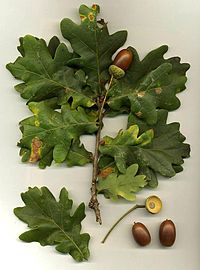
Influence of Bacillus thuringiensis application timing on population dynamics of gypsy moth in Mediterranean cork oak forests.
Sign Up to like & getrecommendations! Published in 2019 at "Pest management science"
DOI: 10.1002/ps.5622
Abstract: BACKGROUND The gypsy moth, Lymantria dispar, is one of the main pests of oak forests worldwide and it causes extensive defoliation during its periodic outbreaks. In the Mediterranean area, the control of gypsy moth populations… read more here.
Keywords: cork oak; gypsy moth; oak forests; application ... See more keywords

Transcriptome analysis of emamectin benzoate caused midgut damage by inducing oxidative stress, energy metabolism disorder and apoptosis in gypsy moth (Lymantria dispar).
Sign Up to like & getrecommendations! Published in 2022 at "Pest management science"
DOI: 10.1002/ps.7083
Abstract: BACKGROUND Emamectin benzoate (EMB) is a semisynthetic bioinsecticide, which has been widely used in the control of forestry and agricultural pests. However, the mechanism of its toxic effects on the non-neural tissues has been rarely… read more here.
Keywords: energy metabolism; apoptosis; oxidative stress; gypsy moth ... See more keywords

Genetic variation in aspen phytochemical patterns structures windows of opportunity for gypsy moth larvae
Sign Up to like & getrecommendations! Published in 2018 at "Oecologia"
DOI: 10.1007/s00442-018-4160-0
Abstract: Empirical studies indicate that host-tree bud break will likely advance faster than spring-folivore egg hatch in response to predicted increases in temperature. How these phenological shifts will affect herbivory will depend on temporal patterns of… read more here.
Keywords: bud break; gypsy moth; among genotypes; egg hatch ... See more keywords

Can gypsy moth stand the heat? A reciprocal transplant experiment with an invasive forest pest across its southern range margin
Sign Up to like & getrecommendations! Published in 2018 at "Biological Invasions"
DOI: 10.1007/s10530-018-1907-9
Abstract: Temperature provides important physiological constraints that can influence the distribution of an invasive species. Gypsy moth (Lymantria dispar L.) is a generalist defoliator in North America and supraoptimal temperatures (above the optimal for developmental rate) have… read more here.
Keywords: range; gypsy moth; transplant experiment; reciprocal transplant ... See more keywords

The immunotoxicity of Cd exposure to gypsy moth larvae: An integrated analysis of cellular immunity and humoral immunity.
Sign Up to like & getrecommendations! Published in 2022 at "Ecotoxicology and environmental safety"
DOI: 10.1016/j.ecoenv.2022.113434
Abstract: Heavy metal exposure-triggered growth retardation and physiology disorder in phytophagous insects have been widely understood, but only a few studies have investigated its immunomodulatory effects on herbivorous insects. Here, the innate immunity of gypsy moth… read more here.
Keywords: gypsy moth; humoral immunity; immunity; moth larvae ... See more keywords

Population dynamics and geographical distribution of the gypsy moth, Lymantria dispar, in Japan
Sign Up to like & getrecommendations! Published in 2019 at "Forest Ecology and Management"
DOI: 10.1016/j.foreco.2018.12.022
Abstract: Abstract The gypsy moth, Lymantria dispar L. (Lepidoptera: Lymantriidae), is distributed throughout most of the northern hemisphere and known as one of the most significant insect pest both in its native and introduced regions. The… read more here.
Keywords: moth lymantria; population; distribution; gypsy moth ... See more keywords

Landscape-Level Patterns of Elevated FS1 Asian Allele Frequencies in Populations of Gypsy Moth (Lepidoptera: Erebidae) at a Northern U.S. Boundary
Sign Up to like & getrecommendations! Published in 2017 at "Environmental Entomology"
DOI: 10.1093/ee/nvx041
Abstract: Abstract From a regulatory perspective, Asian gypsy moth is a species complex consisting of three species of Lymantria and two subspecies of Lymantria dispar (L.), differing from the European subspecies, L. dispar dispar (L.), by… read more here.
Keywords: landscape level; fs1 allele; elevated fs1; gypsy moth ... See more keywords

Geographic Variation in Larval Metabolic Rate Between Northern and Southern Populations of the Invasive Gypsy Moth
Sign Up to like & getrecommendations! Published in 2018 at "Journal of Insect Science"
DOI: 10.1093/jisesa/iey068
Abstract: Abstract Thermal regimes can diverge considerably across the geographic range of a species, and accordingly, populations can vary in their response to changing environmental conditions. Both local adaptation and acclimatization are important mechanisms for ectotherms… read more here.
Keywords: metabolic rate; northern southern; gypsy moth; southern populations ... See more keywords

Tracking invasions of a destructive defoliator, the gypsy moth (Erebidae: Lymantria dispar): Population structure, origin of intercepted specimens, and Asian introgression into North America
Sign Up to like & getrecommendations! Published in 2020 at "Evolutionary Applications"
DOI: 10.1111/eva.12962
Abstract: Genetic data can help elucidate the dynamics of biological invasions, which are fueled by the constant expansion of international trade. The introduction of European gypsy moth (Lymantria dispar dispar) into North America is a classic… read more here.
Keywords: lymantria dispar; gypsy moth; introgression; population ... See more keywords

Ground application of mating disruption against the gypsy moth (Lepidoptera: Erebidae)
Sign Up to like & getrecommendations! Published in 2019 at "Journal of Applied Entomology"
DOI: 10.1111/jen.12696
Abstract: The gypsy moth, Lymantria dispar (L.) (Lepidoptera: Erebidae), is a non‐native defoliating insect that continues to expand its range in North America and undergo periodic outbreaks. In management efforts to suppress outbreaks, slow its spread… read more here.
Keywords: lepidoptera erebidae; mating disruption; ground; gypsy moth ... See more keywords

Variation in growth and developmental responses to supraoptimal temperatures near latitudinal range limits of gypsy moth Lymantria dispar (L.), an expanding invasive species
Sign Up to like & getrecommendations! Published in 2017 at "Physiological Entomology"
DOI: 10.1111/phen.12190
Abstract: Variation in thermal performance within and between populations provides the potential for adaptive responses to increasing temperatures associated with climate change. Organisms experiencing temperatures above their optimum on a thermal performance curve exhibit rapid declines… read more here.
Keywords: limits gypsy; range; gypsy moth; range limits ... See more keywords